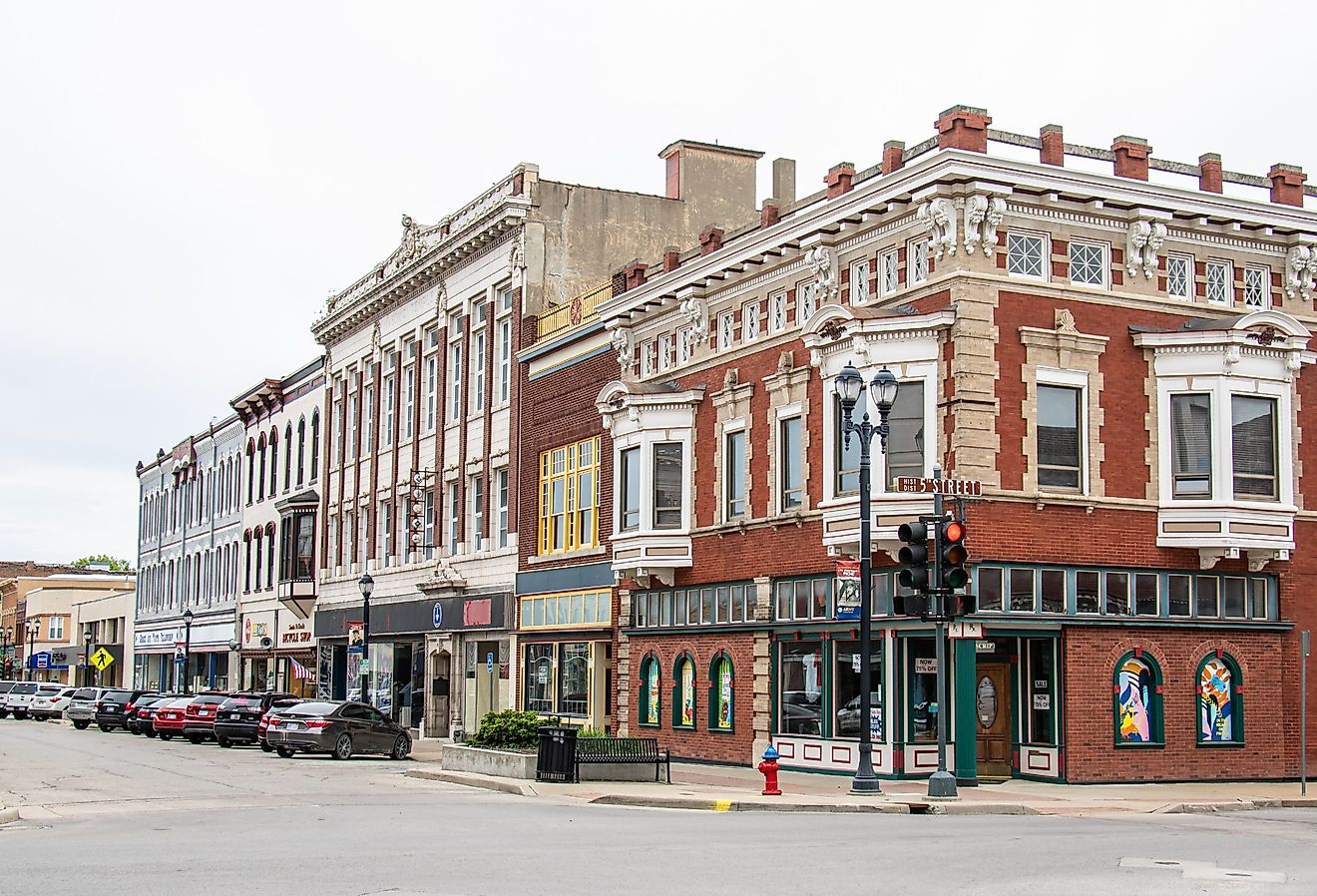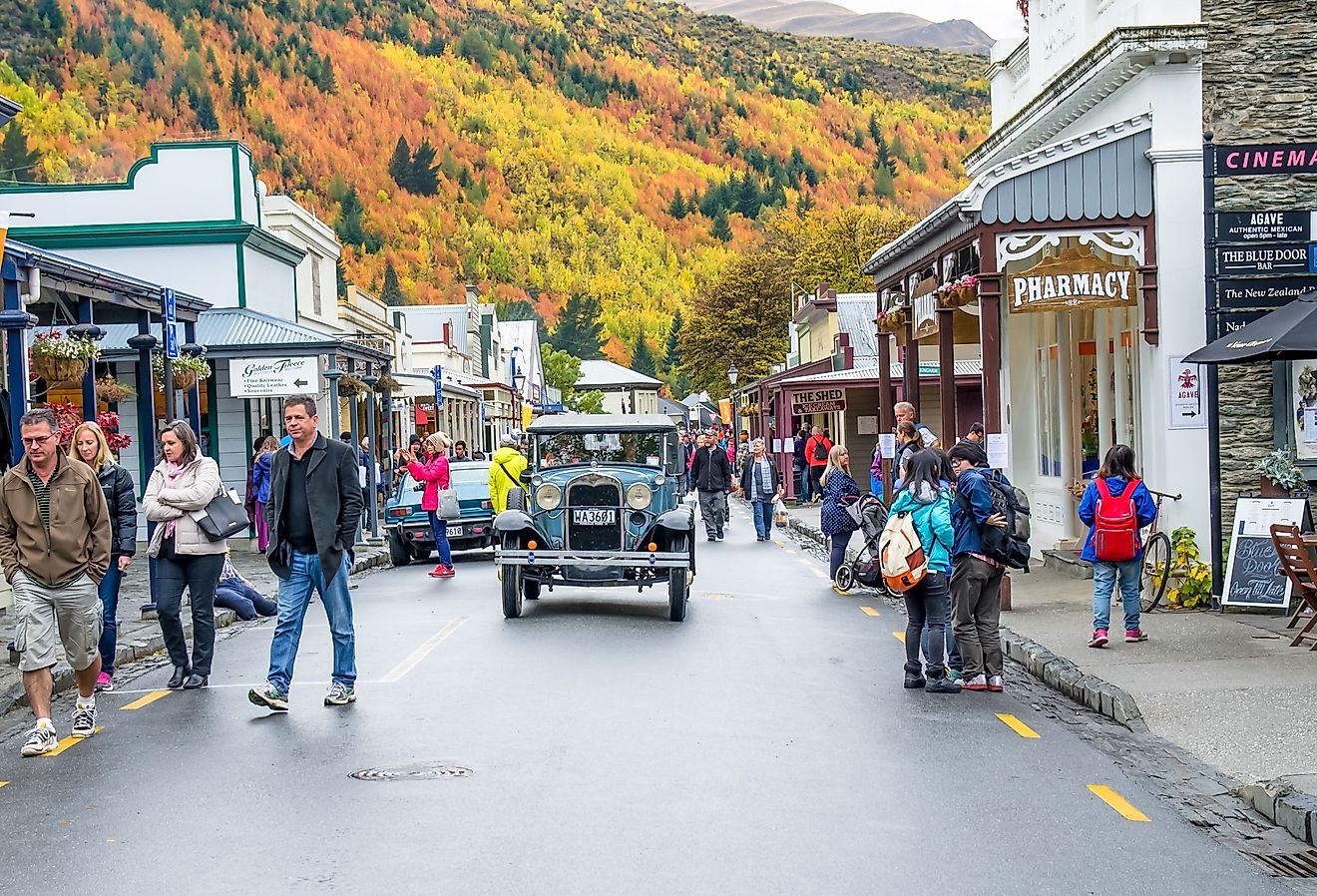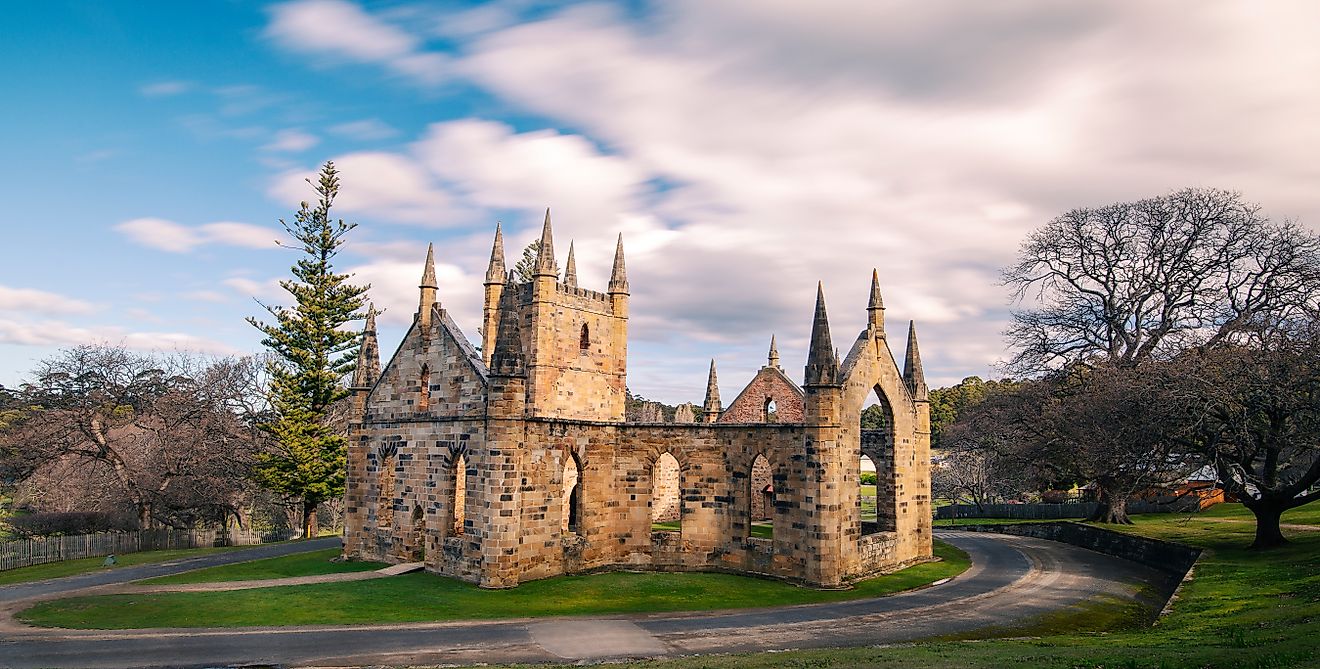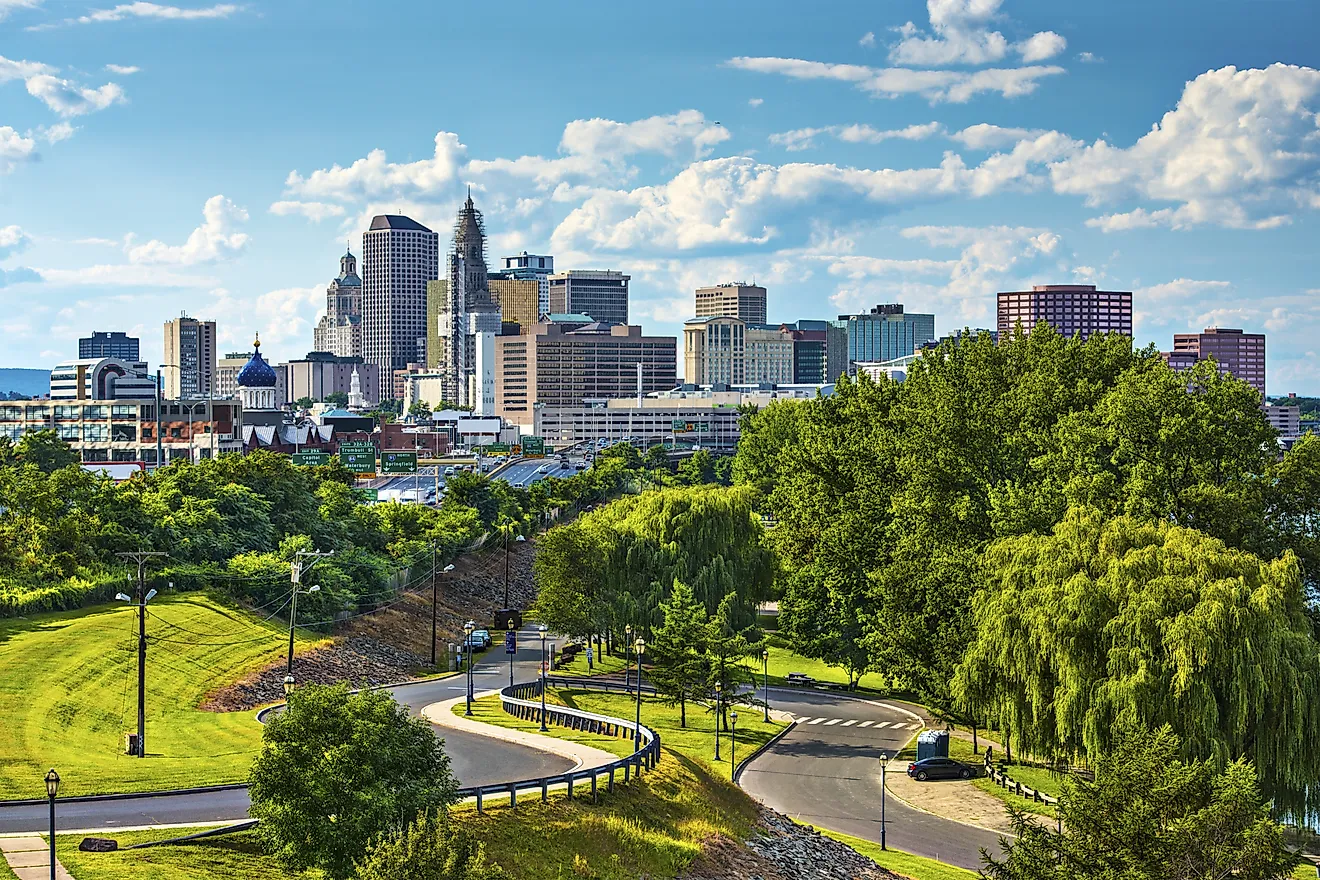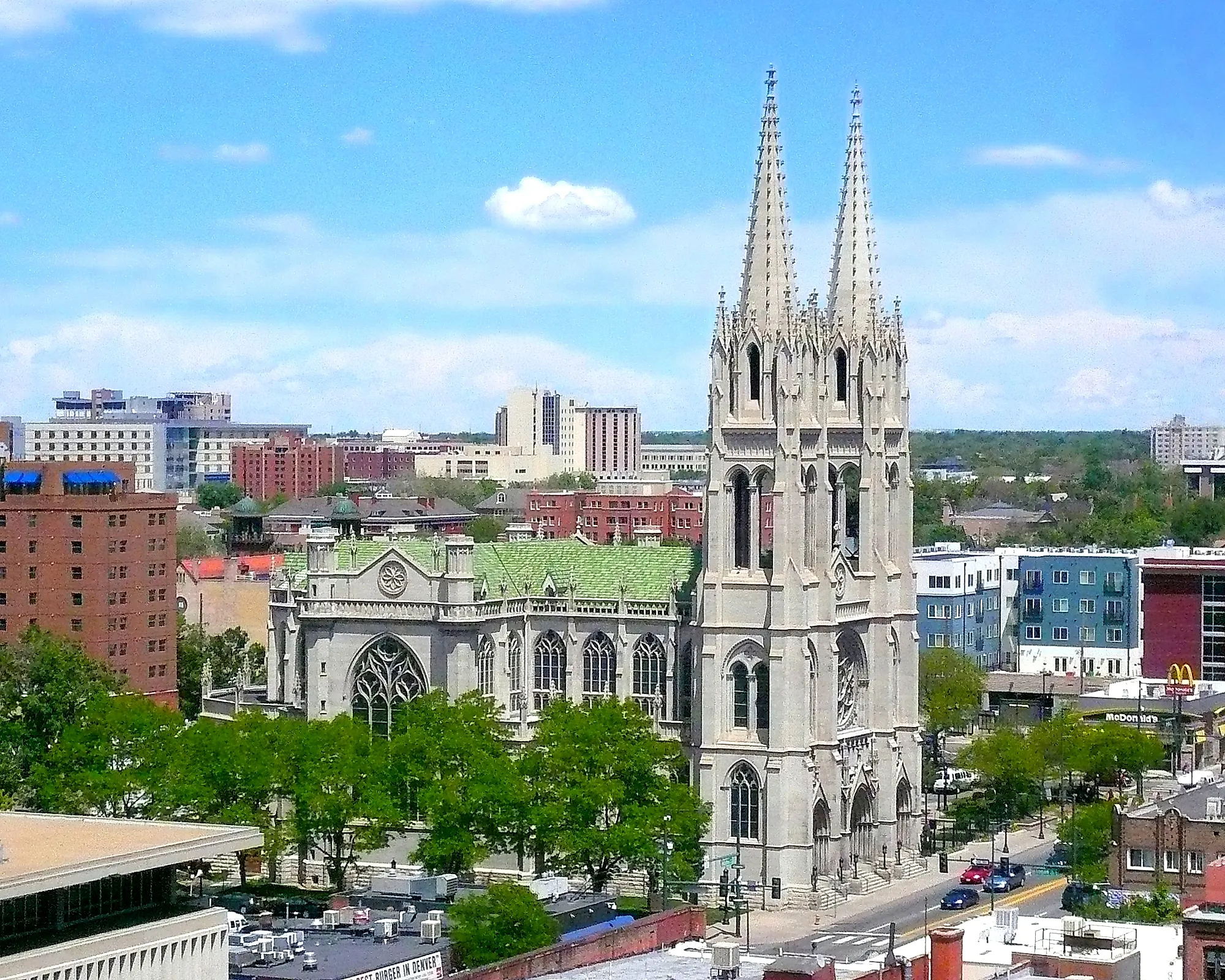
5 Most Beautiful Gothic Churches In Colorado
From Denver’s Capitol Hill to Colorado Springs and the mountain setting of Georgetown, Colorado is home to a remarkable collection of Gothic churches. Built between the late 19th and early 20th centuries, these buildings showcase how Gothic Revival and Carpenter Gothic styles developed across the state, from grand stone cathedrals to smaller wooden parish churches. Each features hallmark elements such as pointed arches, steep gables, stained-glass windows, and interior details that draw the eye upward. Many remain active places of worship, holding Mass, Sunday services, prayer, and parish programs. Together, these churches reflect the craftsmanship, materials, and design traditions that shaped Colorado’s religious architecture and continue to define its historic communities.
Cathedral Basilica Of The Immaculate Conception

The Cathedral Basilica of the Immaculate Conception in Denver, on Colfax Avenue, is one of Colorado’s most impressive Gothic churches. Built between 1901 and 1911 and inspired by French Gothic architecture, the cathedral was designed by architect Leon Coquard and completed by Aaron Gove and Thomas Walsh. It measures 195 feet long and 116 feet wide, originally seating 1,000 before renovations reduced capacity to 800. Twin bell spires, reaching 210 feet, crown the building.
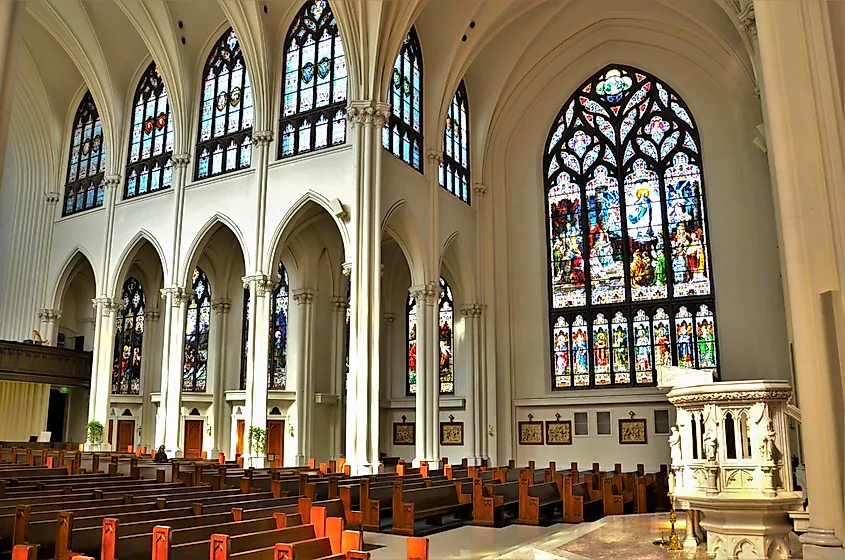
The cathedral sits on a foundation of Gunnison granite and has exterior walls of Indiana limestone. Much of the interior marble comes from Marble, Colorado, while Carrara marble from Italy was used for the altars, statues, pulpit, bishop’s throne, and communion rail. At the top of each column, carved clusters of wheat and grapes extend three ribs that support the soaring Gothic ceiling. Stained-glass windows fill the interior with colorful light, complementing the warm tones of the limestone and granite outside. The Cathedral Basilica Of The Immaculate Conception holds daily Mass and offers guided tours during the week.
The Cathedral of Saint John in the Wilderness
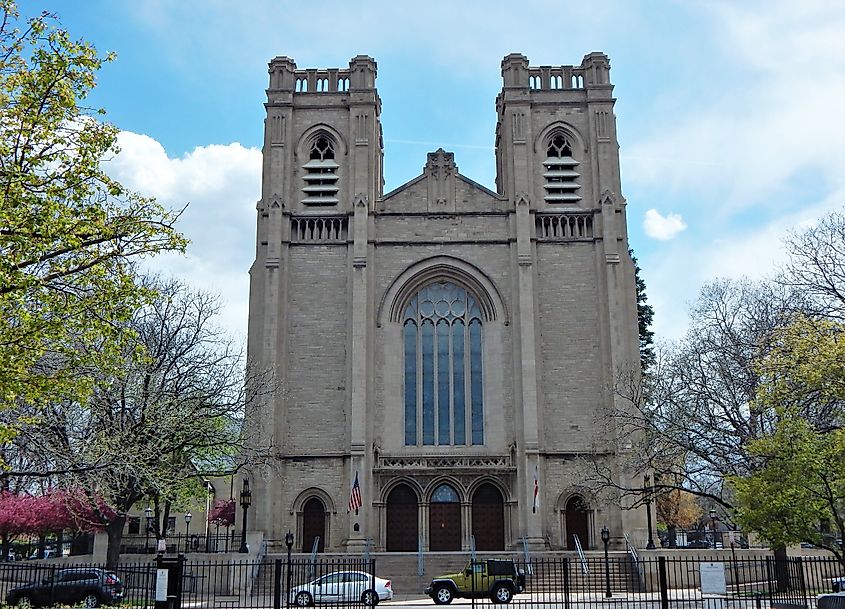
The Cathedral of Saint John in the Wilderness, the seat of the Episcopal Diocese of Colorado, is a striking example of late Gothic Revival architecture. Built between 1905 and 1911 from Indiana limestone, the cathedral features a soaring nave 185 feet long and 65 feet high. While the original plans included a transept, only the nave was completed, preserving elements from the earlier cathedral, including the oak reredos with 13 carved figures and the wrought iron and brass rood screen.
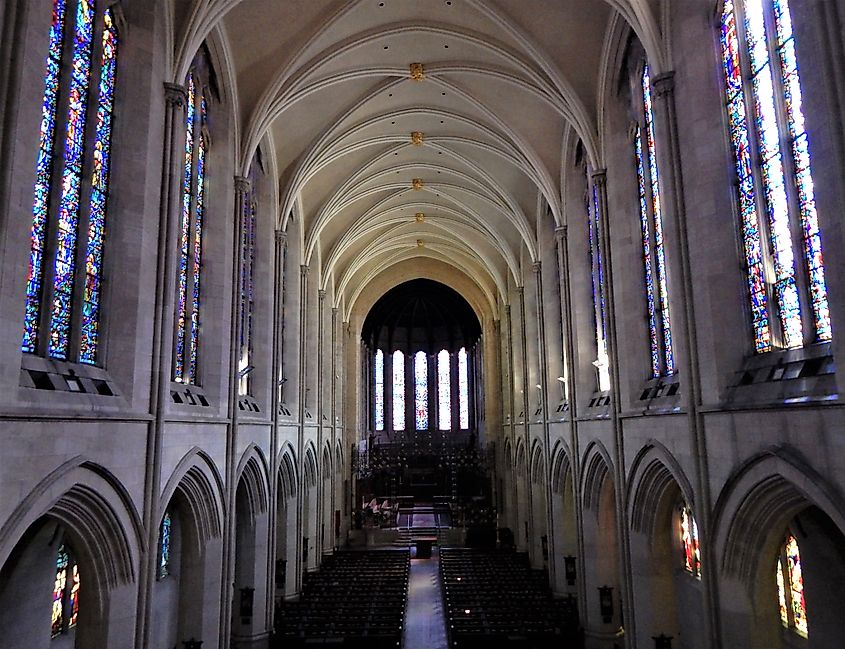
Stained-glass windows, frescoes, commissioned woodwork, and stones from Canterbury Cathedral and Westminster Abbey enrich the space. The cathedral also serves as a hub for community programs, events, and worship services, including The Wilderness, the Dean’s Forum, and Cathedral Night. Occupying a full city block in Denver’s Capitol Hill neighborhood, The Cathedral of Saint John in the Wilderness blends historical significance with architectural grandeur.
St. Mary’s Cathedral

Located on Kiowa Street in Colorado Springs, St. Mary’s Cathedral is the seat of the Diocese of Colorado Springs and a notable example of Gothic Revival architecture. The cathedral’s history dates to 1873, when Rev. Joseph P. Machebeuf celebrated the first Mass in the city. After worshipping in various locations, the parish purchased the current site in 1888. The lower level was completed in 1891, the upper church in 1898, with bell towers added in 1902 and spires finished in 1907. Over the years, St. Mary’s Cathedral has been enhanced with stained-glass windows, Gothic-arched ceilings, and pipe organs.
Designated the diocesan seat in 1983, the cathedral continues to serve the community through worship services, programs, and events. In the 21st century, renovations added gathering spaces, a plaza, and the St. Mary’s Cathedral Columbarium, maintaining its role as the heart of Colorado Springs’ Catholic community.
St. Andrew’s Episcopal Church
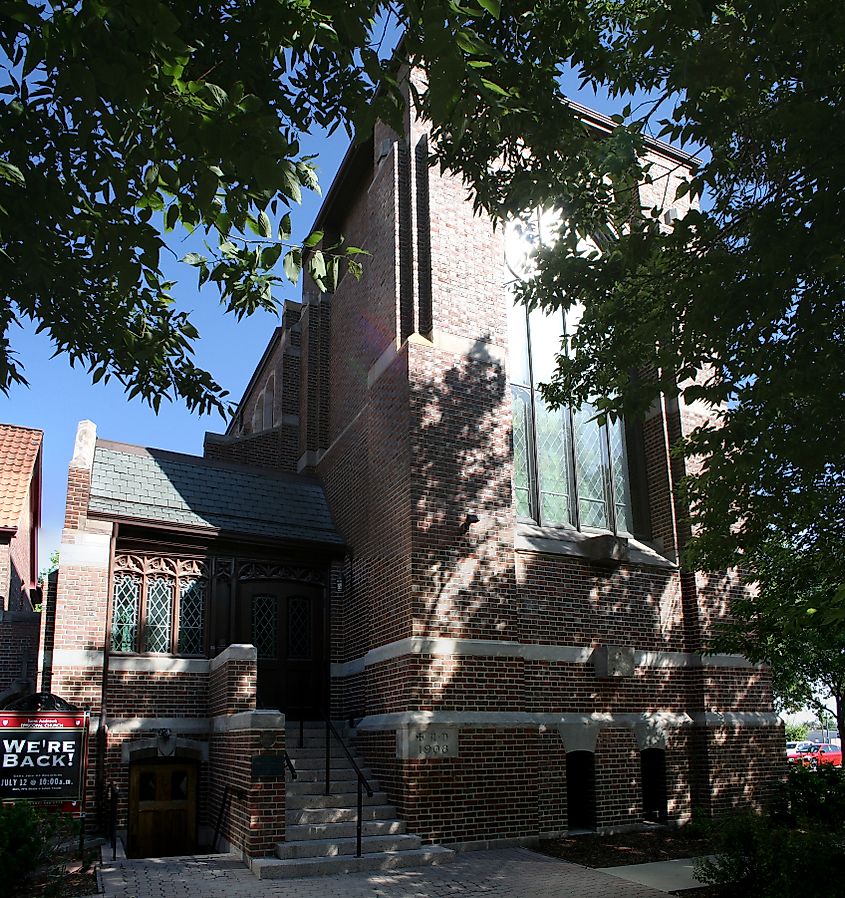
Nestled along Glenarm Place in Denver, St. Andrew’s Episcopal Church is a small parish with notable architectural significance. Built in the early 1900s in the Gothic Revival style, it was designed by renowned architect Ralph Adams Cram. Originally dedicated as Trinity Memorial Church, it was renamed in 1919. The church is recognized as a prime example of Cram-influenced Gothic architecture adapted to a neighborhood parish scale and was listed on the National Register of Historic Places.
In 2008, the sanctuary was expanded in keeping with Cram’s original vision, now seating 175 and featuring artwork by local artists Marion Buchan and Albert Byron Olson. The parish house, designed by architect Jacques Benedict, complements the historic character of the church. St. Andrew’s Episcopal Church continues to hold Mass and community prayer services and features a beautiful native garden with rocks, a berm, benches, and plantings, providing a green space for parishioners and the wider community
Grace Episcopal Church
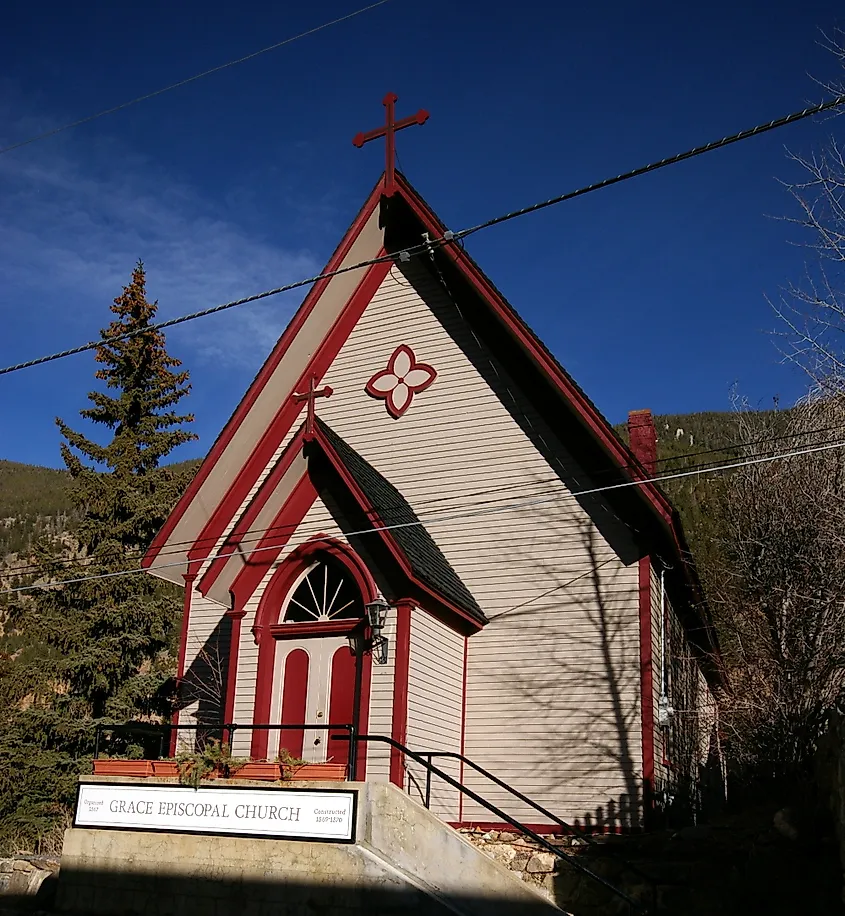
Perched on a steep hillside along Taos Street, Grace Episcopal Church in Clear Creek County has served Georgetown since its congregation formed in 1867. After high winds destroyed the unfinished structure in 1869, Cornish miners helped rebuild it in 1870. Designed by local resident D.H. Joy, the Carpenter Gothic church features a steeply pitched front-gabled roof, a gabled vestibule with double doors beneath a pointed arch, and clapboard walls with corner boards.
Inside, much of the 19th-century character survives. The open-truss roof and carved pew ends reflect early craftsmanship, while the 1877 Charles Anderson pipe organ, still operational and the oldest of its kind in Colorado, accompanies services. An 1882 three-panel reredos sits above the altar, and a stone wall added the same year frames the entry steps. Listed on the National Register of Historic Places, it remains an active parish and a notable example of Carpenter Gothic architecture in one of Colorado’s most historic mining towns.
Colorado's Most Stunning Gothic Churches
From the Cathedral Basilica of the Immaculate Conception and St. John’s Cathedral in Denver to St. Mary’s Cathedral in Colorado Springs and Grace Episcopal Church in Georgetown, Colorado’s Gothic churches show how this style took root across the state. Their pointed arches, stained-glass windows, steep gables, and carved interior details reflect the design traditions that shaped early congregations. Many continue to offer Mass, Sunday services, prayer, programs, and events, remaining active parts of the neighborhoods they have served for more than a century. Built of limestone, granite, marble, or wood, these churches illustrate the lasting presence of Gothic architecture in Colorado and the long-standing role these buildings hold in the communities they anchor.



